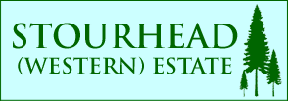

 Home
Products
Timber Info
Activities
Lettings
About
Contact
Home
Products
Timber Info
Activities
Lettings
About
Contact

Forest Management
Stourhead Biodiversity Study
 Study plots
Study plots
From 2019 to 2021 a project lead by Butterfly Conservation studied plants, spiders, moths, bats and birds in conifer dominated stands managed under irregular silviculture principles at the Stourhead (Western) Estate and National Trust Stourhead Estate. Read the full report: Stourhead Biodiversity Report.pdf
Many stands at Stourhead were characterised by a lower basal area than typical commercial, conifer stands in the UK, and some contained a greater habitat structural diversity and a higher component of broadleaved canopy trees.
There is a surprising level of biodiversity at Stourhead, despite the conifer dominated nature of the stands and plantation origins on grassland. A total of 128 plants, 248 moths (27% of larger moths associated with woodland), 13 bats (76% of all UK resident species) and 26 birds species were recorded. This included a limited selection of scarcer species such as Waved Carpet moth or species of conservation concern such as Marsh Tit.
 Waved Carpet Moth
Waved Carpet Moth
Four habitat structural features were identified as particularly important for increasing biodiversity:
- Higher canopy cover of broadleaved trees was an important habitat feature for broadleaved tree feeding moths and three bat species.
- Lower basal area increases habitat complexity and promotes higher plant and bird diversity.
- Maintaining a variable canopy with patchy openness is important. Certain groups like bats responded to more open conditions whereas moths were associated with more closed conditions.
- Greater quantities of deadwood promoted activity of Common and Soprano Pipistrelle.